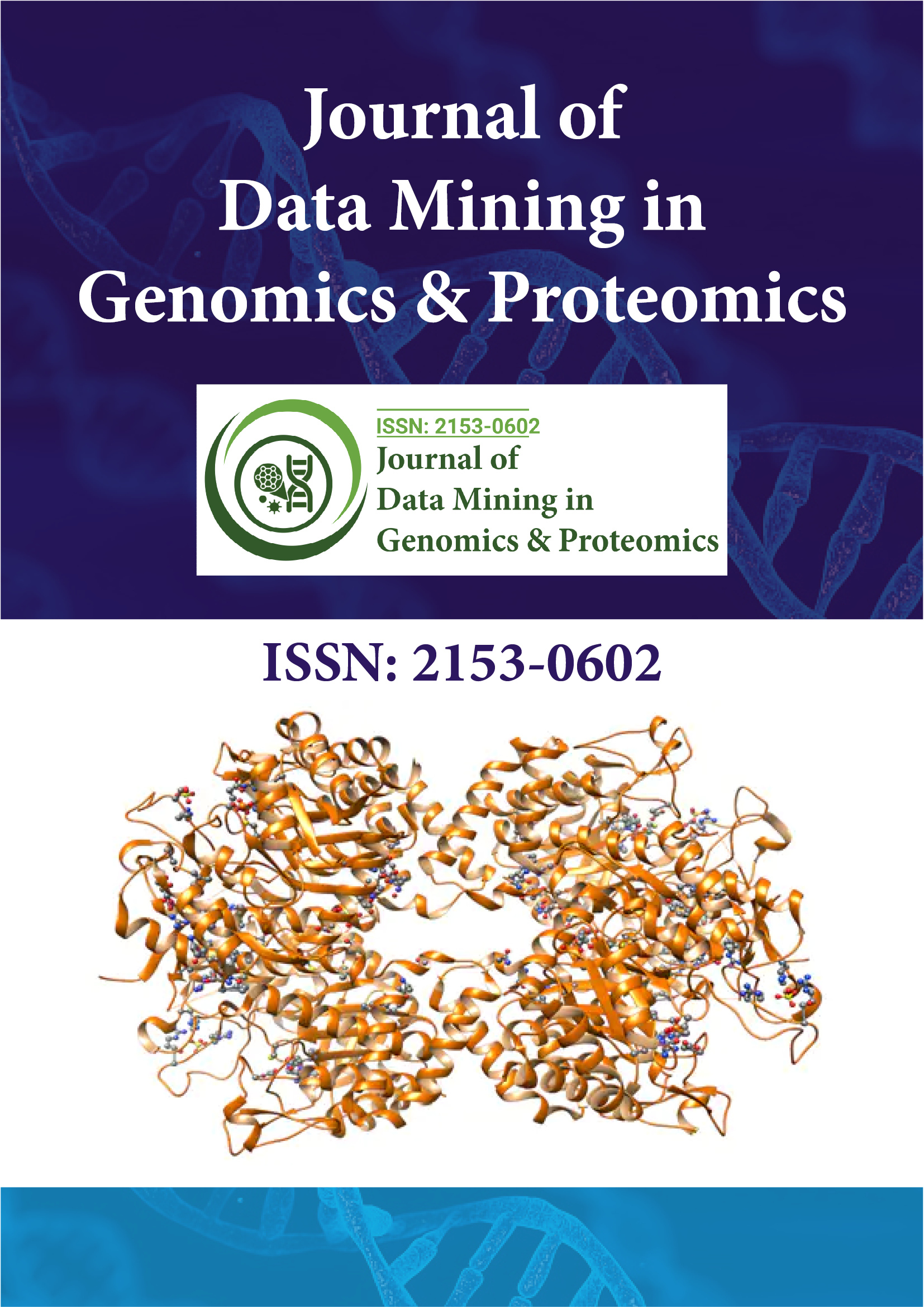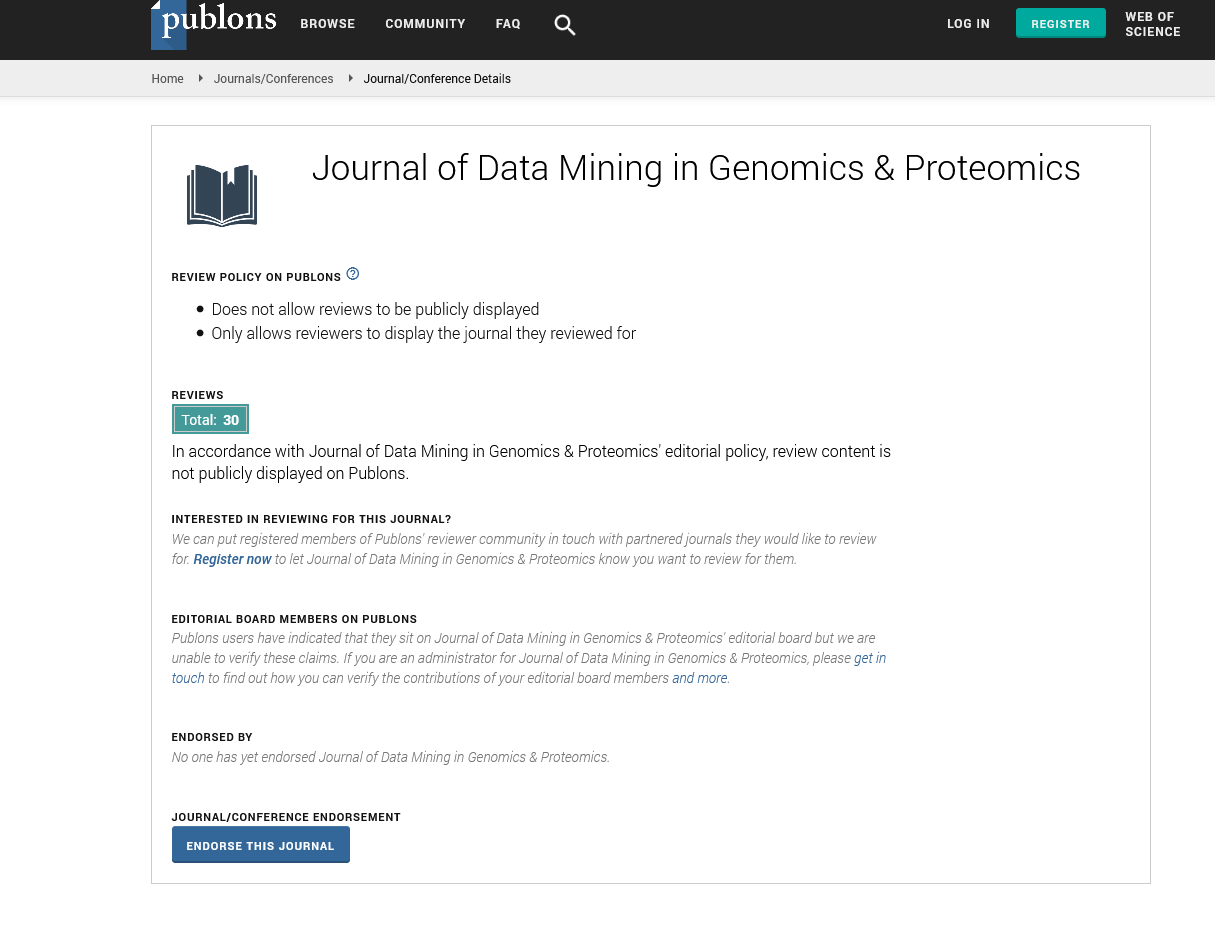Indexed In
- Academic Journals Database
- Open J Gate
- Genamics JournalSeek
- JournalTOCs
- ResearchBible
- Ulrich's Periodicals Directory
- Electronic Journals Library
- RefSeek
- Hamdard University
- EBSCO A-Z
- OCLC- WorldCat
- Scholarsteer
- SWB online catalog
- Virtual Library of Biology (vifabio)
- Publons
- MIAR
- Geneva Foundation for Medical Education and Research
- Euro Pub
- Google Scholar
Useful Links
Share This Page
Journal Flyer

Open Access Journals
- Agri and Aquaculture
- Biochemistry
- Bioinformatics & Systems Biology
- Business & Management
- Chemistry
- Clinical Sciences
- Engineering
- Food & Nutrition
- General Science
- Genetics & Molecular Biology
- Immunology & Microbiology
- Medical Sciences
- Neuroscience & Psychology
- Nursing & Health Care
- Pharmaceutical Sciences
Articles published in Journal of Data Mining in Genomics & Proteomics have been cited by esteemed scholars and scientists all around the world. Journal of Data Mining in Genomics & Proteomics has got h-index 16, which means every article in Journal of Data Mining in Genomics & Proteomics has got 16 average citations.
Following are the list of articles that have cited the articles published in Journal of Data Mining in Genomics & Proteomics.
| 2024 | 2023 | 2022 | 2021 | 2020 | 2019 | 2018 | 2017 | 2016 | 2015 | 2014 | 2013 | 2012 | 2011 | 2010 | |
|---|---|---|---|---|---|---|---|---|---|---|---|---|---|---|---|
Total published articles |
40 | 56 | 30 | 30 | 23 | 2 | 4 | 8 | 30 | 22 | 23 | 34 | 14 | 4 | 5 |
Research, Review articles and Editorials |
5 | 4 | 7 | 15 | 8 | 2 | 4 | 8 | 26 | 22 | 22 | 32 | 14 | 4 | 5 |
Research communications, Review communications, Editorial communications, Case reports and Commentary |
25 | 52 | 23 | 15 | 15 | 0 | 0 | 0 | 4 | 0 | 1 | 2 | 0 | 0 | 0 |
Conference proceedings |
0 | 0 | 0 | 6 | 0 | 0 | 0 | 0 | 0 | 164 | 0 | 0 | 0 | 0 | 0 |
Citations received as per Google Scholar, other indexing platforms and portals |
86 | 104 | 118 | 125 | 166 | 142 | 170 | 190 | 150 | 77 | 52 | 46 | 11 | 14 | 0 |
| Journal total citations count | 1498 |
| Journal impact factor | 2.41 |
| Journal 5 years impact factor | 3.5 |
| Journal cite score | 7.71 |
| Journal h-index | 16 |
Important citations
Conformation-dependent epitopes recognized by prion protein antibodies probed using mutational scanning and deep sequencing.
Scaffolding of a bacterial genome using MinION nanopore sequencing.
Laehnemann D, Borkhardt A, McHardy AC (2016) Denoising DNA deep sequencing data—high-throughput sequencing errors and their correction. ‎Brief Bioinform 17: 154-179.
Illumina TruSeq synthetic long-reads empower de novo assembly and resolve complex, highly-repetitive transposable elements.
SSPACE-LongRead: scaffolding bacterial draft genomes using long read sequence information.
Metagenomic approach for identification of the pathogens associated with diarrhea in stool specimens.
Metatranscriptomics reveals temperature-driven functional changes in microbiome impacting cheese maturation rate.
The effect of dietary resistant starch type 2 on the microbiota and markers of gut inflammation in rural Malawi children.
Brain-gut-microbiota axis: challenges for translation in psychiatry.
Comparative analysis of functional metagenomic annotation and the mappability of short reads.
A new era in palaeomicrobiology: prospects for ancient dental calculus as a long-term record of the human oral microbiome.
Metagenomic analysis of double-stranded DNA viruses in healthy adults.
Metabolic and metagenomic outcomes from early-life pulsed antibiotic treatment.
A systematic analysis of biosynthetic gene clusters in the human microbiome reveals a common family of antibiotics.
Propelling the paradigm shift from reductionism to systems nutrition.
Clustering and interpretation on real nutritional data.
Polyunsaturated fatty acids intake, omega-6/omega-3 ratio and mortality: Findings from two independent nationwide cohorts.
Using Genome Wide Estimates of Heritability to Examine the Relevance of Gene-Environment Interplay.
Towards Semantic Biomedical Problem Solving.
Basic Principles of Molecular Pathophysiology and Etiology of Cardiovascular Disorders

